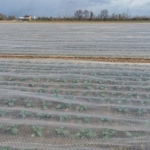
Asparagus farming and the use of mulching plastics


There is a vast diversity of vegetables that, due to their taste and variety, are preferred by consumers in the United States. That is the case of the asparagus, a vegetable that, thanks to its nutritional qualities and easy cultivation process, is one of the most consumed vegetables in the country and whose surface under production grows annually. We will provide in the following article some details regarding its importance in the US market and how the use of mulching plastics for asparagus influences the possibility to obtain a good harvest.
Asparagus are par excellence a vegetable that doesn’t require a complex process of cultivation, planting and care, even though it has a high demand of labor at the time of harvest. Since it doesn’t contain fats or cholesterol, it is considered a healthy food of great dietary and nutritional value. It constitutes an optimal source of folic acid, vitamin C, potassium, thiamine, vitamin B6 and other micronutrients. It has been shown that its glutathione content turns it into one of the most powerful allies to fight cancer and to rejuvenate the blood vessels. All these are virtues that increase its consumption in different countries, so the demand is increasing over the years.
Asparagus production in the United States
The production of asparagus in the US is very valuable since it is an enduring vegetable with an early harvest, which occurs in sandy soils and other heavier soils, that also tolerates low temperatures and droughts, generating income much earlier than other fruits or vegetables that are commonly cultivated. According to the Agricultural Marketing Resource Center: “U.S. annual per capita consumption of fresh asparagus has been increasing in recent years to nearly 1.6 pounds in 2017.” That same year, however, 23,000 acres were harvested, compared to what was harvested more than a decade ago, the cultivated area has declined as a result of the increase of product imports from Central and South America.”
Currently, the states that commercially produce asparagus are Michigan, California and Washington. According to the Agricultural Marketing Resource Center: “The national average yield in 2017 was 2,880 pounds per acre. In 2017, total asparagus production was 66.9 million pounds with 78 percent (52 million pounds) marketed as fresh and 10.6 million and 4.3 million pounds frozen or canned, respectively. Approximately 502.4 million pounds of fresh asparagus were imported in 2017, mostly from Mexico, Peru and Chile. The value of the 2017 U.S. commercial asparagus crop was approximately $73.1 million.”
Among asparagus consumption preferences, it is worth mentioning that the consumer in the United States prefers to buy them fresh. Producers are aware of that and they use certain marketing strategies to promote and market their product once the harvest is over: offering them through wholesale, public auctions, through organized cooperatives or at strategic locations at roads, as well as with some retailers in the region and to people who go to the farms to buy them directly.
Use of plastic mulching for asparagus
It has been proven that the use of plastic films in agriculture is essential to boost crop quality and achieve optimal results at harvest time. It is a practice that dates back many years and is known as plasticulture. Asparagus are no exception and it is an extended practice for large farmers to benefit from the use of mulching plastics to increase productivity, accelerate growth, and improve the use of fertigation techniques.
There is a wide variety of plastic mulching for asparagus and the choice will depend on the color, thickness, type of soil, handling that will be given to the plastic, duration, cost, climatic reality and the speed at which you expect to obtain the product. The ideal scenario is for the farmer to choose the best option -according to his/her needs and growing conditions- that will allow him/her to achieve the expected results. Following, we discuss some of them based on their characteristics:
Thermal Plastic Mini-Tunnel
This is a film generally made up of three layers of clear color that has two side pockets with openings that allow to hold the soil on the inside, and thanks to lateral perforations located at the bottom of that pocket, the rainwater that is deposited there can flow easily. This type of plastics is made from an EVA copolymer and linear polyethylene of the latest technology, providing excellent mechanical, optical and thermal properties to the plantation.
This type of asparagus mulching is intended for those cases where farmers need the product to grow fast, so it can be harvested ahead of its regular time. Besides, due to its thermal characteristics, the film can be handled in a simpler way during the harvesting process.
Among its advantages is the design of its pockets, which make the process of filling with soil less complicated and friendlier, aside from the fact that the rainwater that has accumulated can be easily removed and even drained quite well. During the collection season, the plastic can be handled without inconveniences, either manually or mechanically because of its shape.
Farmers can optimize the use of their water resources, since they help reduce the evaporation of the water contained in the soil, while preventing it from drying completely. Also, removing the plastic is a very fast and simple process, and the best part of it is the fact that it leaves no residue on the land.
White/Black Plastic Films
In the case of this type of mulching plastics for asparagus, farmers generally use them when they need to lower the costs of collecting, expand the total production and improve the quality of the asparagus they wish to cultivate. It eliminates the growth of weeds that can attack the crop and help achieve a higher percentage of high-quality asparagus, even at times when the heat is more intense, and the climatic conditions are unfavorable.
One recommendation is that once the growing season begins, the dark face or side of the film (black mulch) is placed upward to increase the heat in the ground and turn around the white face/side when the temperatures are higher, and we need to reflect them.
Even though the asparagus are a kind type of crop, they are also perishable, so once harvested they must be placed in a water bath with ice, drained and deposited in sacks or plastic bags to refrigerate them at a temperature between 32- and 40-degrees F for approximately two weeks, to make sure they don’t lose quality and freshness.

![[eBook] Increased use of oxygen barrier films](https://agriplasticscommunity.com/wp-content/uploads/ebook6-550x310_ENG-440x264.png)

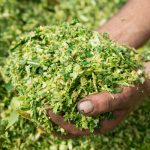

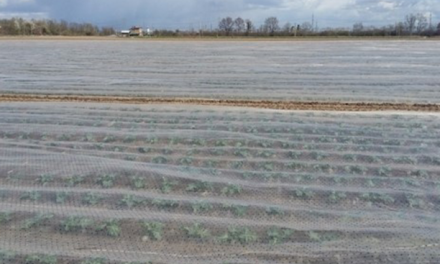
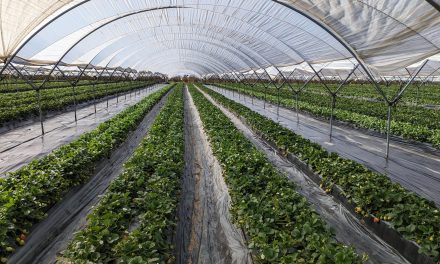
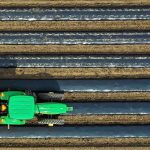

![[eBook Trends in Agriculture Plastics] Increasing use of biodegradable mulch](https://agriplasticscommunity.com/wp-content/uploads/550 × 310_2_ENG-440x264.png)
![[eBook Trends in Agriculture Plastics] Reducing the plastic used in the manufacture of agricultural films](https://agriplasticscommunity.com/wp-content/uploads/550 × 310_1_ENG-440x264.png)




















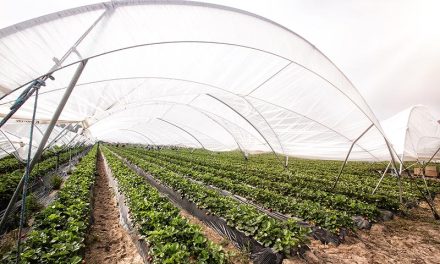


![[eBook] Increased use of oxygen barrier films](https://agriplasticscommunity.com/wp-content/uploads/ebook6-550x310_ENG-150x150.png)
